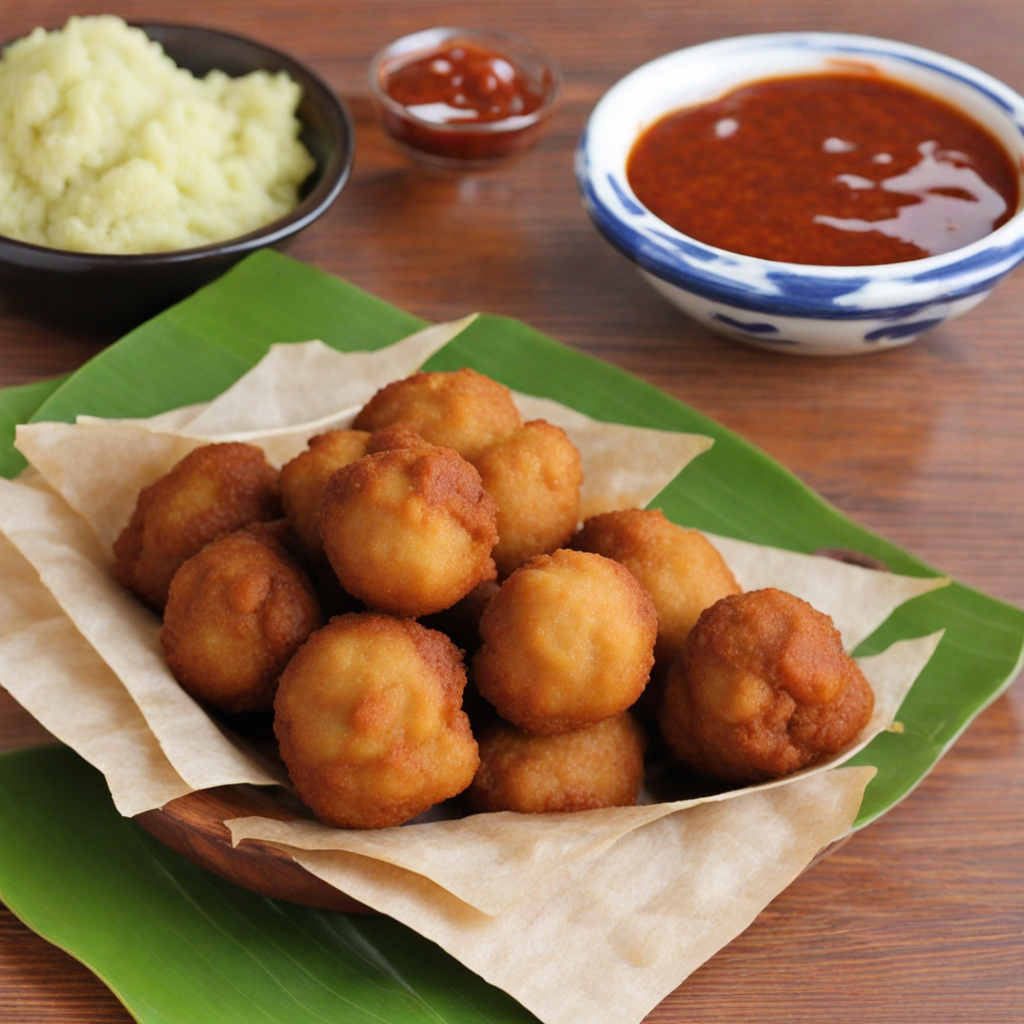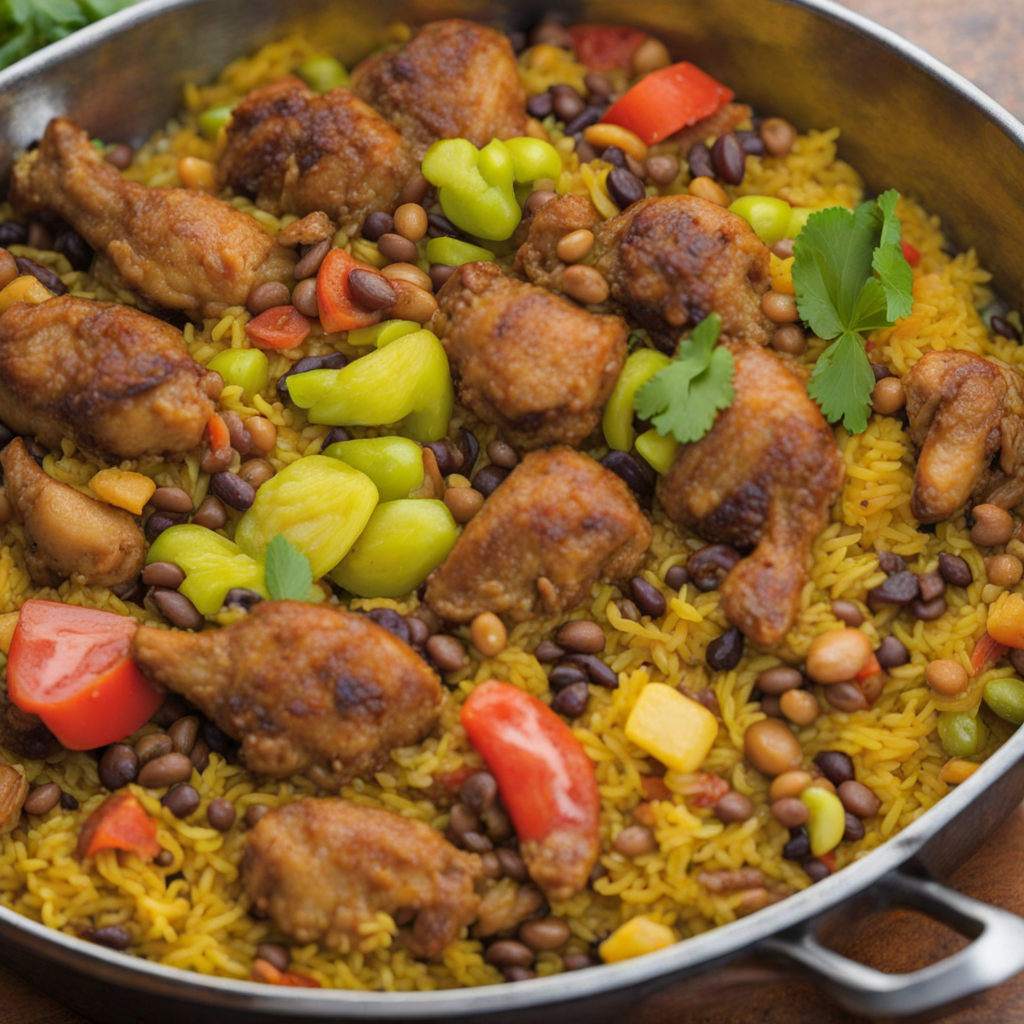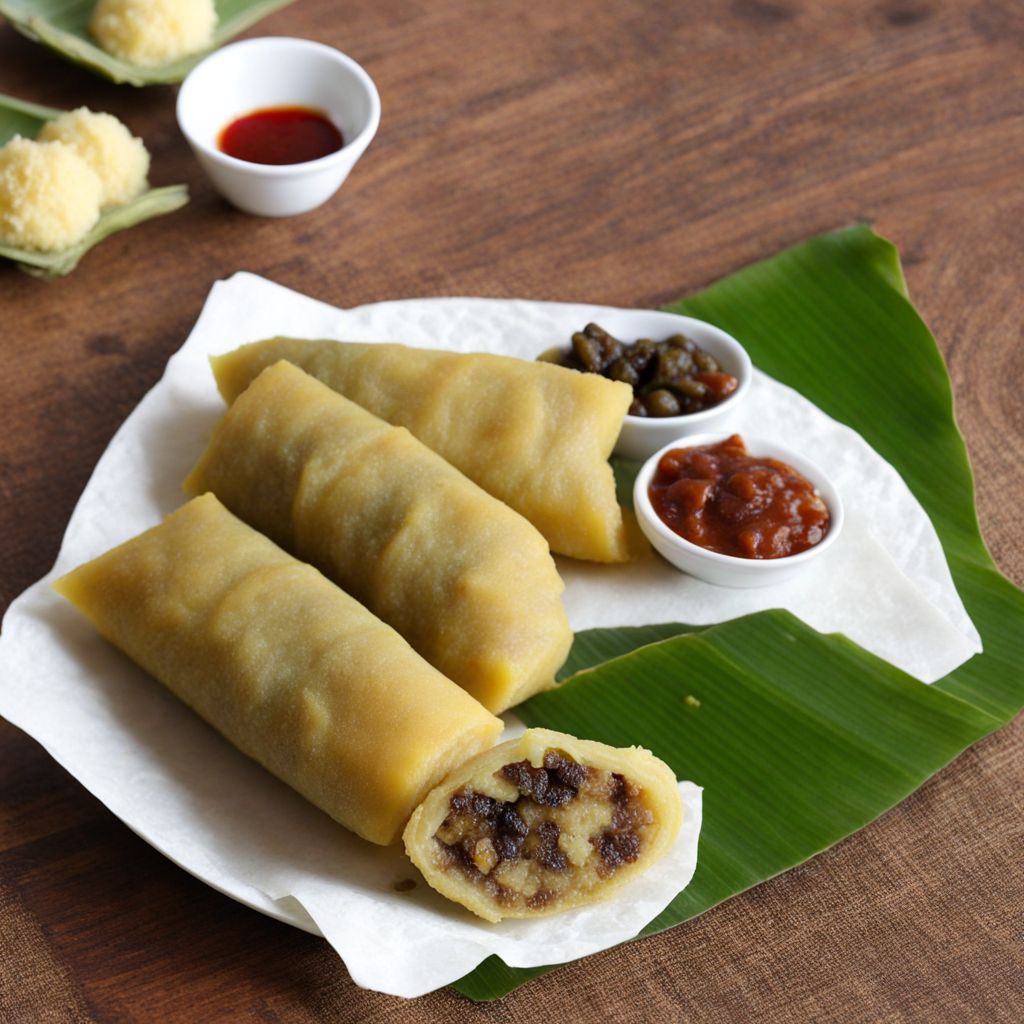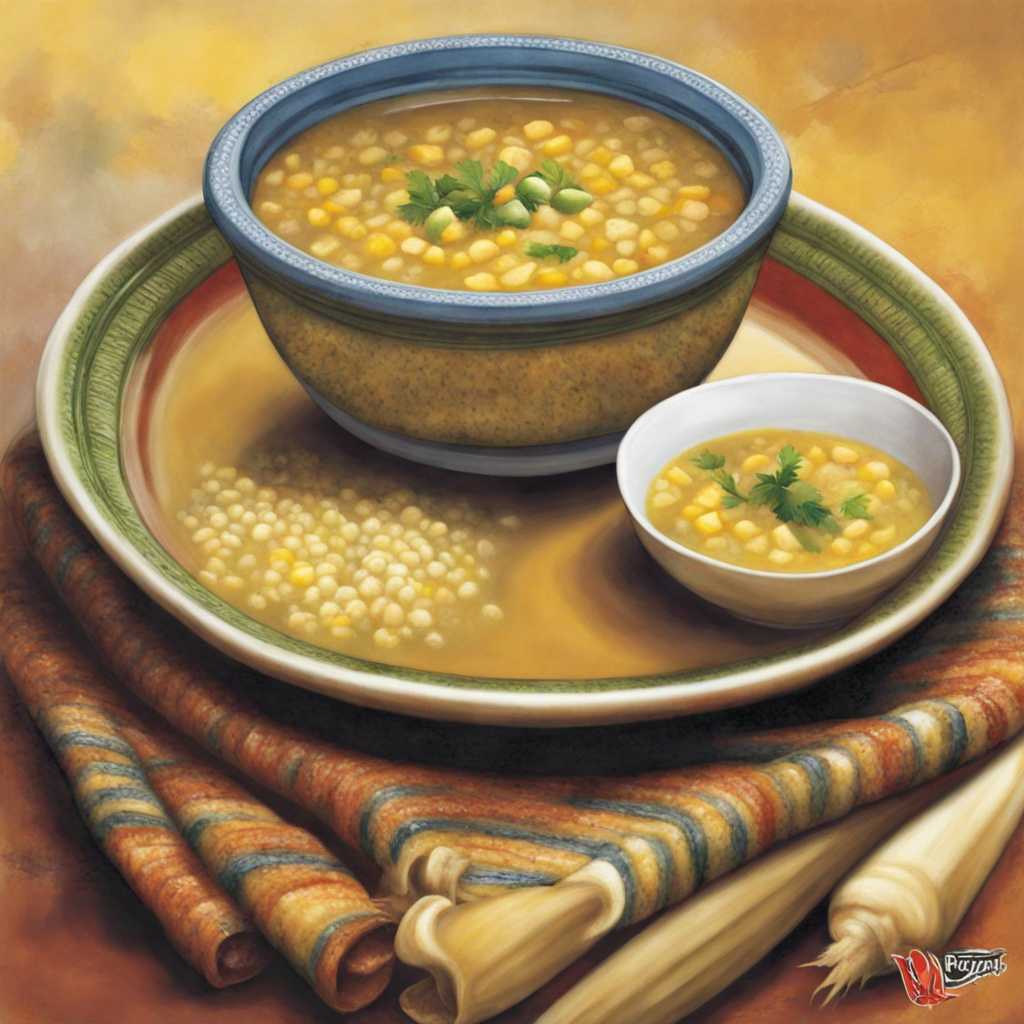Pholourie
Pholourie is a delightful snack that hails from the vibrant culinary landscape of Trinidad and Tobago. These golden, deep-fried balls are made from a spiced split pea flour batter, which is typically mixed with ingredients like turmeric, cumin, and green seasoning. The result is a light and airy texture with a slightly crispy exterior that gives way to a soft, savory center. Often enjoyed as street food, Pholourie is a popular choice for both locals and visitors seeking a taste of authentic Trinidadian flavor. One of the highlights of Pholourie is its versatility; they can be enjoyed on their own or served with a variety of dipping sauces. A popular accompaniment is a tangy tamarind sauce or a zesty mango chutney, which perfectly complements the savory notes of the fritters. The contrast between the crispy exterior and the flavorful fillings makes each bite a delightful experience, evoking the warmth and vibrancy of Caribbean cuisine. Pholourie is often enjoyed during festive occasions, family gatherings, or simply as a quick snack at home. The process of making them is often a communal activity, bringing friends and family together to share in the joy of cooking. Whether you're indulging in these delicious morsels at a local food stall or trying your hand at making them yourself, Pholourie offers a unique taste of Trinidad and Tobago that is sure to leave a lasting impression.
How It Became This Dish
The History of Pholourie: A Culinary Delight from Trinidad and Tobago Pholourie, a beloved snack in Trinidad and Tobago, represents not just a culinary delight but also a rich tapestry of cultural history and community identity. This delectable dish, consisting of spiced split pea flour fritters, is often served with a tangy tamarind or mango chutney, and has become a staple at street food stalls, festivals, and family gatherings across the islands. #### Origins Pholourie has its roots in the Indian diaspora that began in the Caribbean in the 19th century. Following the abolition of slavery in the British Empire, there was a significant labor shortage on plantations, particularly in sugar production. To address this, the British brought indentured laborers from India, primarily from the regions of present-day Uttar Pradesh and Bihar, between 1838 and 1917. These workers brought with them not only their labor but also their culinary traditions, which would profoundly influence the food culture of Trinidad and Tobago. The name "pholourie" is derived from the Hindi word "phool," meaning flower, which relates to the use of split peas or "dal" in the dish. The preparation of pholourie is similar to that of other Indian fritters, such as bhaji or pakora, which are made using various vegetables or lentils mixed with spices. Over time, pholourie adapted to the local ingredients available in Trinidad and Tobago, showcasing the fusion of Indian culinary techniques with Caribbean flavors. #### Cultural Significance Pholourie is more than just a snack; it is a symbol of the multicultural identity of Trinidad and Tobago. The dish embodies the blending of Indian, African, and Creole influences that characterize the islands. It is often enjoyed during festivities, particularly during Diwali, the Hindu festival of lights, and Carnival, a time of celebration and revelry in Trinidad. At these events, pholourie is not only a food item but also a means of bringing communities together, fostering social bonds through shared culinary experiences. In addition, pholourie reflects the resilience and adaptability of the Indian community in Trinidad and Tobago. As the Indian diaspora established itself, it faced various challenges, including cultural assimilation and economic hardship. The ability to maintain traditional food practices while adapting to new environments speaks to the enduring spirit of cultural identity. Pholourie has become a dish that transcends its origins, embraced by people of all backgrounds in Trinidad and Tobago. #### Development Over Time As Trinidad and Tobago evolved through the 20th century, so too did pholourie. Initially a simple street food item, it gained popularity as a more refined snack served at social gatherings and celebrations. The versatility of pholourie allowed it to be incorporated into various culinary contexts—served as an appetizer, a party snack, or even as part of a larger meal. During the 1970s and 1980s, the global interest in Caribbean cuisine began to rise, largely due to the growing diaspora and the efforts of chefs and cultural ambassadors who showcased the region's culinary diversity. This period saw the introduction of pholourie to international food festivals and Caribbean-themed restaurants, where it was often highlighted as a must-try delicacy. This exposure helped elevate pholourie from a local delicacy to a recognized symbol of Trinidadian cuisine. In the late 20th and early 21st centuries, the culinary scene in Trinidad and Tobago flourished, with a renewed interest in traditional dishes. Pholourie became a staple at food festivals, and food trucks specializing in local cuisine began to pop up, offering gourmet takes on classic snacks. Chefs experimented with various flavors and ingredients, incorporating local spices, herbs, and even seafood into the traditional pholourie recipe. This evolution led to new versions, such as sweet potato pholourie or pholourie stuffed with spicy fillings, catering to diverse palates while honoring its roots. #### Pholourie Today Today, pholourie is widely celebrated in Trinidad and Tobago and has found its way into the hearts and kitchens of people around the world. It is often featured in food blogs, cookbooks, and social media platforms, where home cooks and professional chefs alike share their takes on this traditional dish. The availability of split pea flour and other ingredients in international grocery stores has made it easier for those outside the Caribbean to recreate this beloved snack at home. Pholourie is not just a food item; it is a symbol of the rich cultural heritage of Trinidad and Tobago. It serves as a reminder of the island's history and the enduring legacy of its diverse communities. Whether enjoyed at a bustling street vendor, at a family gathering, or as part of a festive celebration, pholourie continues to embody the spirit of Trinidad and Tobago—celebrating diversity, resilience, and community. #### Conclusion In conclusion, pholourie is a dish that transcends mere sustenance; it tells the story of Trinidad and Tobago's cultural journey. From its origins in Indian culinary traditions to its status as a cherished snack enjoyed by people of all backgrounds, pholourie encapsulates the spirit of fusion that defines Caribbean cuisine. As it continues to evolve and adapt to modern tastes while honoring its historical roots, pholourie remains a testament to the power of food as a medium for cultural expression and connection. In every bite, one can taste the history, resilience, and vibrant culture of Trinidad and Tobago—a delicious reminder of the island's rich tapestry of influences.
You may like
Discover local flavors from Trinidad And Tobago







